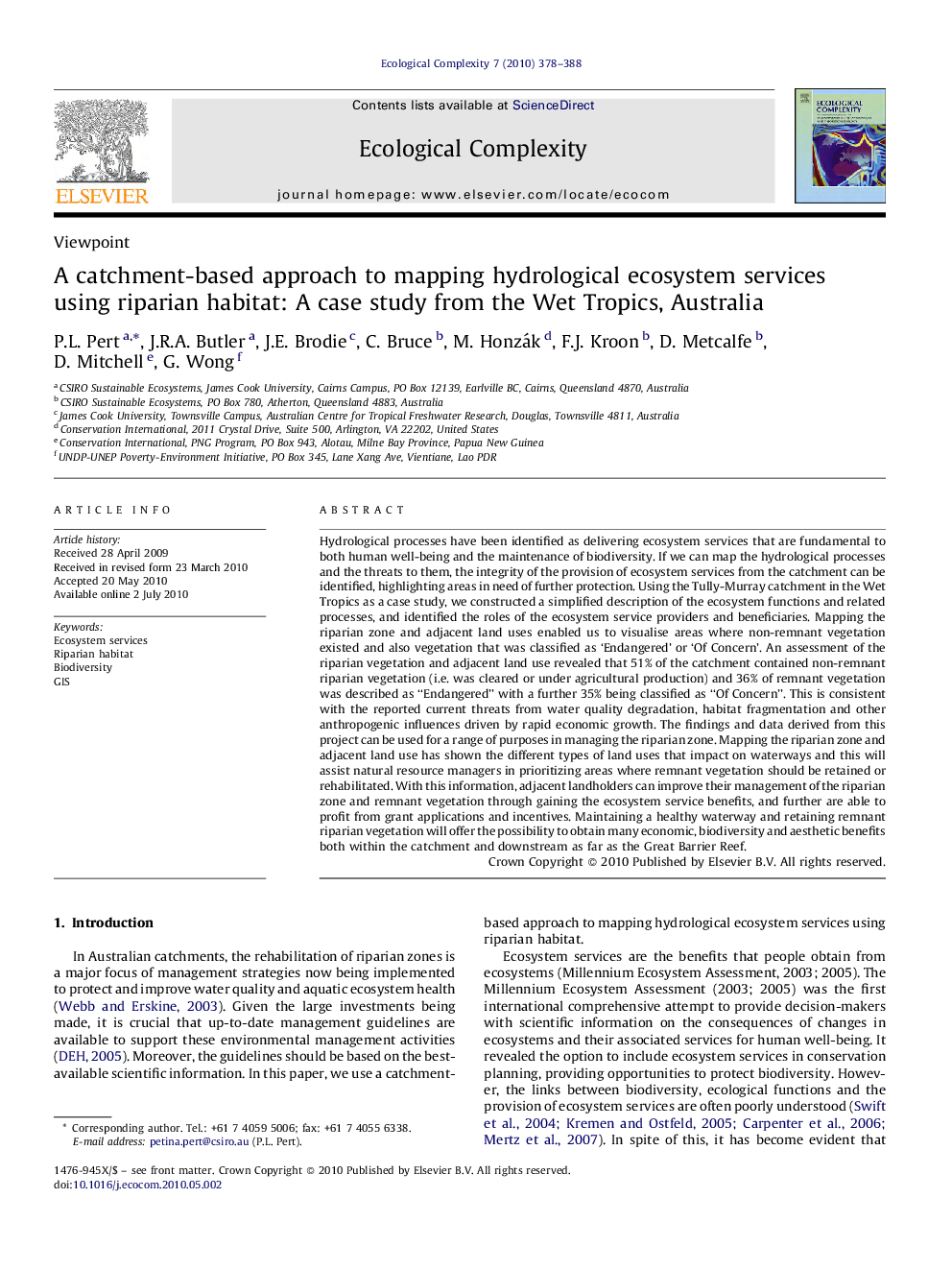| کد مقاله | کد نشریه | سال انتشار | مقاله انگلیسی | نسخه تمام متن |
|---|---|---|---|---|
| 4372686 | 1303072 | 2010 | 11 صفحه PDF | دانلود رایگان |

Hydrological processes have been identified as delivering ecosystem services that are fundamental to both human well-being and the maintenance of biodiversity. If we can map the hydrological processes and the threats to them, the integrity of the provision of ecosystem services from the catchment can be identified, highlighting areas in need of further protection. Using the Tully-Murray catchment in the Wet Tropics as a case study, we constructed a simplified description of the ecosystem functions and related processes, and identified the roles of the ecosystem service providers and beneficiaries. Mapping the riparian zone and adjacent land uses enabled us to visualise areas where non-remnant vegetation existed and also vegetation that was classified as ‘Endangered’ or ‘Of Concern’. An assessment of the riparian vegetation and adjacent land use revealed that 51% of the catchment contained non-remnant riparian vegetation (i.e. was cleared or under agricultural production) and 36% of remnant vegetation was described as “Endangered” with a further 35% being classified as “Of Concern”. This is consistent with the reported current threats from water quality degradation, habitat fragmentation and other anthropogenic influences driven by rapid economic growth. The findings and data derived from this project can be used for a range of purposes in managing the riparian zone. Mapping the riparian zone and adjacent land use has shown the different types of land uses that impact on waterways and this will assist natural resource managers in prioritizing areas where remnant vegetation should be retained or rehabilitated. With this information, adjacent landholders can improve their management of the riparian zone and remnant vegetation through gaining the ecosystem service benefits, and further are able to profit from grant applications and incentives. Maintaining a healthy waterway and retaining remnant riparian vegetation will offer the possibility to obtain many economic, biodiversity and aesthetic benefits both within the catchment and downstream as far as the Great Barrier Reef.
Journal: Ecological Complexity - Volume 7, Issue 3, September 2010, Pages 378–388